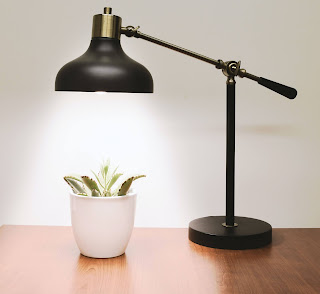How To Debug Plants Before Bringing Them Indoors
However, by overlooking this process, many plant lovers end up spending more money buying pesticides to get rid of pests. Therefore it's better to take the time to properly debug your plants before you bring them indoors. This will save you money and headaches down the line.
Disclosure: This post contains affiliate links. We may receive commissions on purchases made from our chosen links with no extra cost to you. Learn more.
Step 1: Remove Dead & Diseased Leaves
Apart from other possible causes of dead leaves on plants, dead and diseased leaves are commonly associated as the presence of diseased leaves usually leads to leaf death. Thus, we advise you to remove both dead and diseased leaves. Doing so will help to keep your plants healthy and give them a fresh, new look.
Dead or diseased leaves symptoms:
The most common signs of diseased or dead leaves include curly, mushy, dry, brown or yellowing leaves. Prune large leaves with sharp scissors or garden shears. Don't use dull pruning tools to avoid inaccurate cuts and damage to the plant while pruning.
For smaller plants simply pinch off the leaves with your fingers. After pruning, securely bag the leaves in a plastic bag and then put the bag in a trash can. Additionally, make sure to wear gloves to protect your hands from injuries and plant sap as some plants have sap that irritates the skin.
Step 2: Check for Pests
After removing leaves, the next step is to check for pests on your plants. This is actually the main reason for debugging your plants when bringing them indoors. Here's how to conduct a plant inspection.
Inspect the entire plant:
Carefully inspect the entire plant for pests including the undersides of the leaves, on the branch tips, and new growth. You can use a magnifying glass to get a closer look. These areas are where most insects often hide, especially soft-boiled insects like aphids and mites.
What to do:
If you do see bugs on your plants and can identify what you're dealing with, find a guide in this blog that has been specifically created to get rid of that certain pest. We've written many informative guides for a wide variety of pest control topics, from how to get rid of gnats, aphids, mealybugs, whiteflies and many more.
Products to use:
Alternatively, if you have less time to go through the guides, you can get all-in-one organic pesticides that are designed to get rid of a variety of insect pests. Four of the best sprays we recommend for debugging your plants are DEBUG Turbo spray, General Hydroponics AzaMax, PyGanic Gardening, and Safer Brand Insect Killing Soap
IMPORTANT NOTE: To minimize the risk of damaging your plants, apply insecticides late in the evening or in a shaded area. But if there are no pests present in your plants, don't apply anything. Skip to step number 3
Step 3: Clean Plant Foliage
Cleaning your plants before bringing them indoors will help to remove dirt, dust, or any residue. Note that if you've applied pesticides, you must not wash the leaves for 24 hours after spraying.
Cleaning process:
To clean plants, the size and type of a plant can impact how it should be done. For plants with smaller leaves, use a soft paintbrush to gently remove any dust. You can get a paintbrush at a craft store.
Then for plants with large leaves, use a damp microfiber cloth with soap solution to wipe down the leaves. You can use dish soap but I prefer to use insecticidal soap since it's specifically formulated for use on plants. Use enough water to thoroughly clean your plants and make sure to use a cloth that hasn't been used to clean other surfaces. Also, clean the underside of the leaves as the dirt often accumulate
Rinsing process:
After you've cleaned your plants with soapy water, rinse them with another clean cloth dipped in plain water. Alternatively, you can use a spray nozzle to wash plants with hard textured, large or medium leaves.
Then use a spray bottle to mist delicate plants. These alternative suggestions are efficient as they allow you to cover a large area more quickly. But be careful not to spray water too forcefully as it may damage the leaves.
When cleaning and rinsing your plants, try to wrap the base of the plant in plastic wrap in order to avoid overwatering or soapy water coming into contact with the soil. When you're done, let your plants dry completely before bringing them indoors.
Step 4: Consider the Health of Soil
There are several ways to tell if your soil is healthy or not. You can judge by simply looking at it (but that's not reliable though), or perform a soil test for accurate results. If the soil is not healthy you can amend it or repot your plants in fresh soil.
Additionally, check for pests or eggs in the soil. Gently remove a small amount of topsoil with a garden trowel. If you find any pests, you can treat the soil or repot. One of the very popular tiny bugs you can find in plants' soil is fungus gnats larvae. To get rid of it, you can apply mosquito bits/dunks. They're natural and kill the larvae without damaging the plant
Tip: When repotting or after cleaning your plants don't forget to thoroughly clean your containers.
To Conclude
Even though debugging is not an easy task it is worth it. As we mentioned before, it will save you a lot of time, money, as well as headaches down the road. Just think of it as maintaining your car or any of your appliances. Maintaining it helps to prevent expensive repairs in the future, and the same goes for debugging plants.
You Might Also Like
The 15 Best Plant Stands for Every Style and Space
The Best Grow Lights for Your Plants
Best Potting Soil for Your Plants
Best All Purpose Plant Food and Fertilizers







Comments
Post a Comment
Have something to say? Feel free to leave a comment.